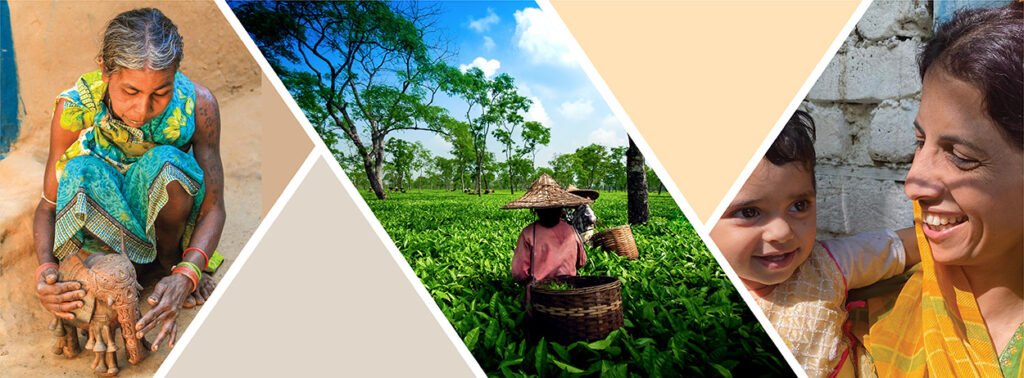
“We are living in an era of immense possibilities which in turn creates opportunities. We need to identify existing aspirations in the districts and channelise them to create a ripple effect for transforming Aspirational Districts. The development of every village of these 115 districts is vital to our commitment to social justice.” – Prime Minister Narendra Modi
India, with its vast and diverse landscape, faces a significant challenge in ensuring equitable development across all regions. While urban areas have seen considerable progress, many rural and remote districts lag in critical developmental parameters. Addressing these disparities is essential for holistic national growth. The Aspirational Districts Programme (ADP), launched in 2018, and the Aspirational Blocks Programme (ABP), introduced in 2023, are pivotal initiatives aimed at transforming India’s most underdeveloped regions. NITI Aayog’s ‘Sampoornata Abhiyan’ campaign, running from July 4 to September 30, 2024, is a renewed effort to achieve saturation in key indicators across these districts and blocks.
India’s development narrative has been uneven, with certain regions enjoying robust economic growth and others grappling with poverty, poor health, and inadequate infrastructure. Aspirational districts represent the latter, where the lack of basic amenities hinders human development and economic progress. By focusing on these districts, the government aims to bridge these gaps, ensuring that no region is left behind. Human development is a multi-dimensional concept encompassing health, education, and living standards. Aspirational districts often score poorly on these fronts. Improving these indicators in these regions can lead to significant improvements in overall human development. Better health and education outcomes not only improve individual quality of life but also enhance productivity and economic potential.
The focus on aspirational districts is also a move towards promoting social equity. Many of these districts have significant populations of marginalized communities, including Scheduled Castes, Scheduled Tribes, and other backward classes. Targeted development efforts can help uplift these communities, promoting social justice and inclusive growth. Development disparities can lead to regional discontent and socio-political unrest. By ensuring that all regions, including the most backward ones, are brought into the development fold, national integration is strengthened. This not only fosters a sense of belonging among residents of these districts but also ensures political stability and unity.
Launched in 2018, the ADP targets 117 districts identified as the most underdeveloped. The programme focuses on improving key indicators across various sectors such as health and nutrition, education, agriculture and water resources, financial inclusion, skill development, and basic infrastructure.
- Data-Driven Approach: The ADP uses a data-driven approach to identify and track progress on various indicators. This ensures that interventions are targeted and measurable.
- Convergence of Schemes: The programme seeks the convergence of central and state schemes, ensuring that resources are utilized efficiently. For example, efforts to prevent stunting involve coordinating various schemes like the Integrated Child Development Scheme (ICDS), the Public Distribution Scheme (PDS), and public health and sanitation initiatives.
- Collaboration and Competition: Districts are encouraged to learn from each other and replicate best practices. A healthy sense of competition is fostered, motivating districts to perform better.
- The Aspirational Blocks Programme (ABP) Building on the success of the ADP, the ABP was launched in 2023, targeting 500 blocks across the country. The ABP aims for the saturation of essential government services in multiple domains.
- Saturation of Services: The ABP aims to achieve complete coverage of essential services such as health, nutrition, education, drinking water, sanitation, agriculture, and financial inclusion in the targeted blocks.
Case Study Surajpur District, Chhattisgarh
Surajpur district in Chhattisgarh provides a compelling example of the impact of government initiatives in aspirational districts. In this district, Mr. Gajanan Sakhare and his team from Briota, in collaboration with the government, introduced point-of-care testing (POCT) devices for health screening in tribal areas. This initiative brought medical facilities to some of the most remote and underserved populations, demonstrating the transformative potential of focused development efforts. The programme’s success in Surajpur was largely due to the convergence of multiple schemes and the dedicated efforts of district officers. By coordinating various initiatives such as the Integrated Child Development Scheme (ICDS), the Public Distribution Scheme (PDS), and public health and sanitation programmes, the district achieved significant improvements in health outcomes.
While the Aspirational Districts Programme and related initiatives have shown promising results, several challenges remain. Ensuring sustained progress requires addressing issues such as, Enhancing the capacity of local governments and communities to plan, implement, and monitor development initiatives. Resource Allocation Ensuring adequate and timely allocation of resources to meet the needs of aspirational districts. Developing strategies to ensure that improvements are sustainable in the long term, beyond the initial phase of intervention. Scaling successful models and best practices to other districts and regions.
The development of aspirational districts is crucial for achieving inclusive and equitable growth in India. Government initiatives such as the Aspirational Districts Programme, the Aspirational Blocks Programme, and NITI Aayog’s ‘Sampoornata Abhiyan’ are making significant strides in transforming these regions. By focusing on key indicators, ensuring the convergence of schemes, and promoting community participation, these initiatives are addressing the developmental disparities that have long hindered the progress of many regions.
Simdega (Jharkhand), Chandauli (Uttar Pradesh), Sonbhadra (Uttar Pradesh) and Rajgarh (Madhya Pradesh) were found to have progressed the most since the beginning of the programme. Tata Trust in collaboration with the state government is mobilizing its resources in 200 villages of 3 districts of Balarampur, Bahraich and Shravasti. With this type of participation, Jal Jeevan Mission is becoming a Jan Andolan.
The success stories emerging from districts like Surajpur in Chhattisgarh highlight the potential for transformative change when dedicated efforts and collaborative approaches are employed. While challenges remain, the continued focus on aspirational districts promises a brighter, more equitable future for all of India. As these initiatives evolve, they will undoubtedly play a critical role in shaping the nation’s development trajectory and ensuring that the benefits of growth reach every corner of the country.






Add comment